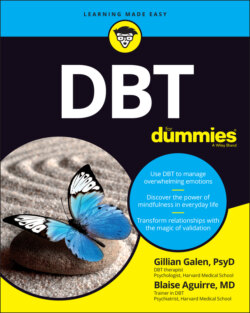Читать книгу DBT For Dummies - Gillian Galen - Страница 11
Looking at the Main Pillars of DBT
ОглавлениеDBT stands on three big philosophical and scientific pillars. These pillars are specific assumptions that hold the treatment together:
All things are interconnected. Everything and everyone is interconnected and interdependent. We are all part of the greater tapestry of all things, a community of beings that supports and sustains us. We are also connected to our family, friends, and community. We need others; others need us.
Change is constant and inevitable. This is not a new idea. The pre-Socratic philosopher Heraclitus said, “The only constant in life is change.” Life is full of suffering, but because change happens, change being the only thing of which you can be certain, your suffering will change as well.
Opposites can be integrated to form a closer approximation of the truth. This is at the core of dialectics. A dialectical synthesis combines the thesis (an idea) and the antithesis (its opposite). In coming up with the synthesis of the two ideas, the process never introduces a new concept not found in either the thesis or the antithesis. Strictly speaking, the synthesis incorporates one concept from the thesis and one from the antithesis.
Check out Chapter 2 for more about DBT’s main pillars.
